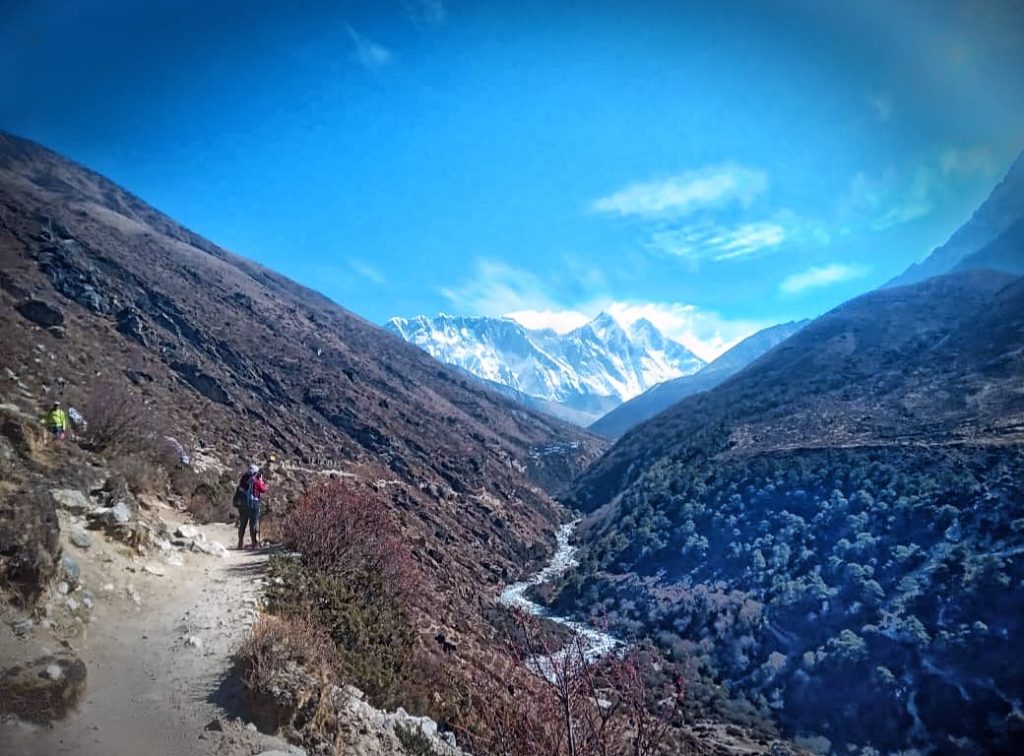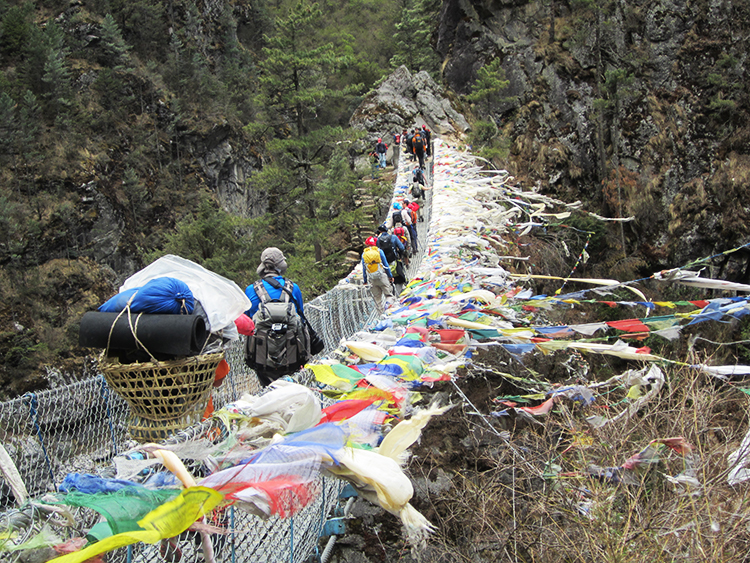The Top 15 Tips for a Trek to Everest Base Camp gives you a brief insight into must-know tips for a successful Everest Base Camp Trek.

What is Everest Base Camp?
Everest Base Camp is the starting point for climbers who wish to summit Mount Everest, the highest mountain in the world. The base camp is located on the south side of the mountain in Nepal, at an altitude of 5,364 meters (17,598 feet).
For non-climbers, the Everest Base Camp Trek is a popular hiking route that takes them through the Khumbu Valley along the same trail used by climbers to reach the base camp. The trek is known for its stunning mountain scenery, traditional Sherpa villages, and rich cultural heritage. It typically takes around 12–14 days to complete the trek, with opportunities to acclimate to the altitude along the way. While trekking to Everest Base Camp does not involve climbing the mountain itself, it is still a challenging and rewarding adventure that requires proper preparation and planning.
The Trek to Everest Base Camp starts with a flight from Kathmandu to Lukla, a small mountain town located at an altitude of 2,860 meters (9,383 feet). From Lukla, the trek follows a trail that passes through scenic valleys, picturesque Sherpa villages, and Buddhist monasteries. The trekker will pass through several high passes, including the famous Kala Patthar (5,545 meters/18,192 feet), which offers stunning panoramic views of Mount Everest, Lhotse, Nuptse, and other peaks in the Khumbu region.
Along the way, trekkers can experience the rich Sherpa culture and hospitality, as they pass through traditional Sherpa villages like Namche Bazaar, Tengboche, and Dingboche. The trekker can witness the colorful prayer flags, traditional monasteries, and yak caravans, which are an essential part of the Sherpa way of life.
The Everest Base Camp Trek is a challenging adventure that requires good physical fitness, mental strength, and a positive attitude. Proper acclimatization, hydration, and nutrition are essential for a successful trek. Hiring a guide or porter is highly recommended, as they can provide valuable support and guidance throughout the journey.
Everest Base Camp is a world-renowned destination that attracts adventure seekers from all over the world. Whether you are a climber or a trekker, the experience of being in the shadow of the world’s highest mountain is unforgettable. The trek to Everest Base Camp is an excellent opportunity to explore the beauty of the Khumbu region and experience the unique culture and hospitality of the Sherpa people.
The Everest Base Camp Trek is a challenging but rewarding adventure that requires proper planning and preparation.
Here are the Top 15 Tips for a Trek to Everest Base Camp
Get in shape: The trek to Everest Base Camp involves walking long distances at high altitudes. You should start preparing at least three months in advance by doing cardiovascular exercises, such as running or cycling, and strength training to build up your leg muscles.
Acclimatization: Acclimatization is the process of adjusting to high altitudes. You should plan to spend a few days in Kathmandu or nearby areas to help your body adjust to the altitude before starting the trek.
Gear and equipment: You will need to invest in proper gear and equipment for the trek. This includes hiking boots, warm clothing, a good-quality backpack, a sleeping bag, and trekking poles.
Trekking permits: You will need to obtain trekking permits from the Sagarmatha National Park and the local government. Make sure you have all the necessary permits before starting the trek. Take advice from a reputed travel agency from Nepal.
Hire a guide or porter: It is highly recommended to hire a guide or porter for the Everest Base Camp Trek. They can help you navigate the trail, carry your gear, and provide support in case of any emergencies.
Mental preparation: The trek to Everest Base Camp can be physically and mentally challenging. You should be prepared for long hours of hiking, changing weather conditions, and high altitudes. Mental preparation and a positive attitude are key to successfully completing the trek.
Hydration and nutrition: Proper hydration and nutrition are essential for a successful trek. Ensure you drink plenty of water and carry snacks and energy bars to maintain your energy levels.
By following these tips and preparing well in advance, you can have a safe and enjoyable trek to Everest Base Camp.
Research and planning: It’s important to research and plan your trek to Everest Base Camp thoroughly. This includes deciding on the best time of year to go, choosing a reputable trekking company or guide, and knowing the route and what to expect along the way.
Altitude sickness prevention: Altitude sickness is a serious concern when trekking at high altitudes. It’s important to prevent altitude sickness, by staying hydrated, ascending gradually, and taking medication if necessary.
Travel insurance: Trekking to Everest Base Camp is an adventure, and there are risks involved. It’s important to have travel insurance that covers emergency medical evacuation, trip cancellation, and other potential issues that may arise during the trek.
Respect the environment and culture: The Everest region is home to a unique and delicate environment, as well as a rich and diverse culture. It’s important to respect the environment and culture by following Leave No Trace principles and respecting local customs and traditions.
Pack light: It’s important to pack light for the trek to Everest Base Camp, as you will be carrying your own gear. Bring only the essentials and try to keep your backpack weight under 15-20 kg. Pack versatile clothing that can be layered to adapt to changing weather conditions.
Train with your gear: Before embarking on the trek, it’s a good idea to train with your gear to get a feel for the weight and ensure that everything fits comfortably. This can also help you identify any potential issues with your gear before you set out on the trail.
Stay connected: While the Everest region may be remote, it’s still possible to stay connected to the outside world. Consider bringing a satellite phone or portable Wi-Fi device to stay in touch with loved ones and emergency services if needed.
Be flexible: The weather and trail conditions in the Everest region can be unpredictable. It’s important to be flexible and adjust your itinerary as needed. This may mean taking rest days or changing your route to avoid hazardous conditions.
By following these tips, you can further prepare yourself for the Everest Base Camp Trek and increase your chances of a safe and successful journey. Remember to take your time, enjoy the trip, and take in the breathtaking beauty of the Himalayas.
